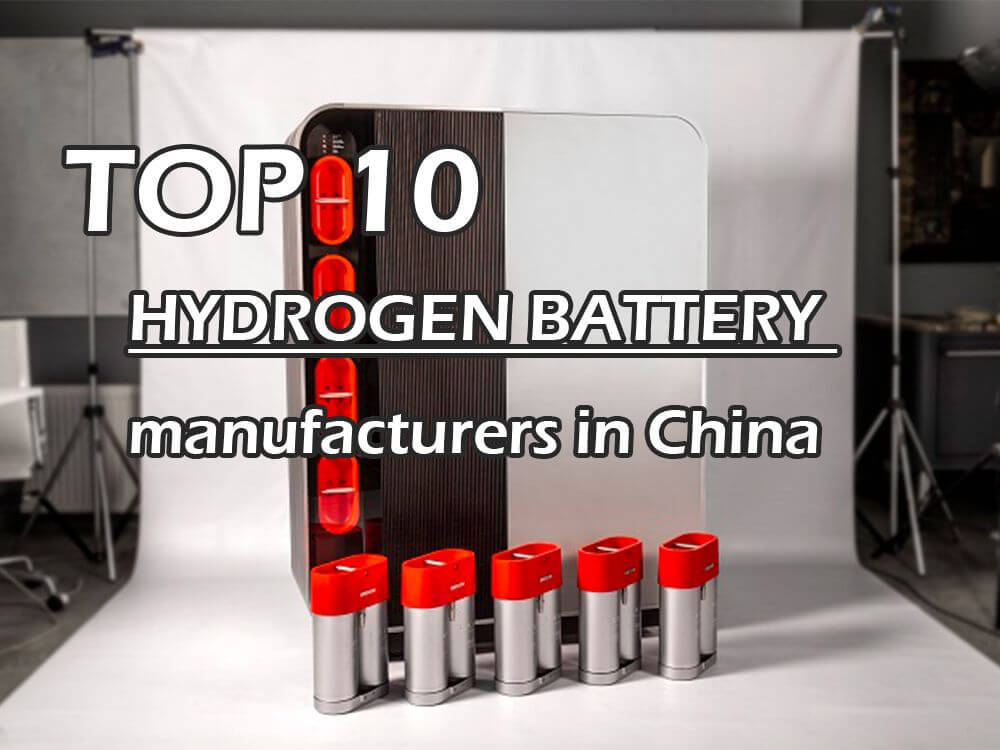Hydrogen Or Battery Buses: Which Is Best For European Cities?

Table of Contents
Battery Electric Buses: The Current Market Leader
Battery-electric buses (BEBs) currently dominate the market for sustainable public transport. Their prevalence is largely due to a number of key advantages.
Advantages of Battery Electric Buses:
- Lower Upfront Cost: BEBs generally have a lower initial purchase price compared to hydrogen fuel cell buses, making them a more financially accessible option for many cities.
- Established Charging Infrastructure: Many European cities already possess a developing network of charging stations, simplifying integration and reducing initial infrastructure investment.
- Advanced Battery Technology: Battery technology continues to improve, leading to increased energy density, extended range, and longer lifespan. This translates to greater operational efficiency and reduced life-cycle costs.
- Quiet Operation: BEBs offer significantly quieter operation than their hydrogen counterparts, contributing to a more pleasant urban environment, particularly in densely populated areas.
- Lower Maintenance (in some cases): In some instances, BEBs require less frequent and less complex maintenance compared to hydrogen fuel cell buses, lowering operational expenses.
- Successful Deployments: Numerous European cities have successfully implemented BEB fleets, including:
- London, UK: Significant deployment of electric buses across the city.
- Amsterdam, Netherlands: Extensive use of electric buses in the city's public transport network.
- Hamburg, Germany: Growing fleet of electric buses supporting the city's sustainability goals.
Disadvantages of Battery Electric Buses:
- Range Limitations: The range of BEBs can be a limiting factor, especially in larger cities with extensive routes and infrequent charging opportunities.
- Charging Infrastructure Gaps: While charging infrastructure is developing, many areas still lack sufficient charging points, hindering widespread adoption.
- Battery Lifespan and Recycling: The lifespan of batteries is finite, raising concerns about their eventual disposal and the need for efficient recycling programs.
- Electricity Source Dependency: The environmental impact of BEBs is directly linked to the source of electricity used for charging. Reliance on fossil fuel-based power generation negates the environmental benefits.
- Potential Grid Overload: Widespread BEB adoption could place a significant strain on existing electricity grids, necessitating grid upgrades and potential capacity limitations.
Hydrogen Fuel Cell Buses: A Promising Alternative
Hydrogen fuel cell buses (HFCBs) represent a compelling alternative to BEBs, offering some significant advantages, despite facing challenges.
Advantages of Hydrogen Fuel Cell Buses:
- Longer Range: HFCBs boast a considerably longer range than BEBs, making them suitable for longer routes and less frequent refueling stops.
- Faster Refueling: Refueling HFCBs is significantly faster than charging BEBs, minimizing downtime and improving operational efficiency.
- Reduced Grid Reliance: HFCBs are less reliant on the electricity grid, reducing strain on infrastructure and mitigating potential grid overload.
- Potentially Cleaner Emissions: When produced using renewable energy sources (green hydrogen), HFCBs offer near-zero tailpipe emissions, significantly reducing their environmental impact.
- Suitable for Longer Routes: Their extended range makes them ideal for longer routes and less frequent stops, which might be difficult for battery electric buses.
- Renewable Hydrogen Production: Advances in green hydrogen production, using renewable energy sources like solar and wind power to split water into hydrogen and oxygen, are improving the sustainability of this fuel source.
Disadvantages of Hydrogen Fuel Cell Buses:
- Higher Initial Cost: The initial purchase price of HFCBs is significantly higher than that of BEBs, representing a substantial barrier to entry for many cities.
- Limited Refueling Infrastructure: The lack of widespread hydrogen refueling infrastructure across Europe poses a significant obstacle to wider adoption.
- Hydrogen Production and Storage: Producing, transporting, and storing hydrogen safely and efficiently remains challenging and costly.
- Safety Concerns: Concerns surrounding hydrogen storage and handling require robust safety protocols and infrastructure to mitigate risks.
- Lower Energy Efficiency (in some scenarios): The overall energy efficiency of HFCBs can be lower than BEBs in certain operational contexts, impacting their overall environmental performance.
Factors Influencing the Choice for European Cities
The optimal choice between BEBs and HFCBs depends on several crucial factors specific to each city's context.
City Size and Route Lengths:
Larger cities with extensive and longer bus routes might find HFCBs more advantageous due to their extended range and faster refueling times. Smaller cities with shorter routes may find BEBs sufficient, benefitting from their lower upfront costs and existing charging infrastructure.
Existing Infrastructure:
The presence of established charging or refueling infrastructure plays a critical role. Cities with well-developed charging networks may favor BEBs, while those with limited infrastructure might need to prioritize hydrogen refueling infrastructure development.
Energy Sources and Environmental Impact:
A comprehensive life-cycle assessment is essential, considering the carbon footprint of both electricity generation for BEBs and hydrogen production for HFCBs. Using renewable energy for both significantly improves their environmental profiles.
Economic Considerations:
Total cost of ownership (TCO), encompassing initial investment, operational costs, maintenance, and fuel/electricity expenses, must be carefully evaluated for each technology. Government subsidies and incentives can significantly influence the TCO calculations.
Political and Regulatory Landscape:
Government policies, regulations, and financial incentives play a crucial role in shaping the adoption of either technology. Supportive policies can accelerate the transition to sustainable public transport.
Conclusion: Choosing the Right Green Bus for Your European City
Both battery electric and hydrogen fuel cell buses offer viable pathways towards sustainable public transport in European cities. However, the optimal choice hinges on a nuanced assessment of each city's specific conditions and priorities. While BEBs offer a currently more cost-effective and readily deployable solution with established technology, HFCBs present a potentially more sustainable option in the long term, particularly for larger cities and longer routes, pending advancements in hydrogen production and infrastructure development. A holistic approach, considering infrastructure development, energy sources, economic factors, and the political landscape, is essential for making an informed decision. To determine the best solution for your specific needs regarding hydrogen or battery buses in your European city, we encourage further research, consulting with relevant experts in the field, and exploring available resources on sustainable public transport initiatives.

Featured Posts
-
 Anthony Edwards Status Timberwolves Vs Lakers Game
May 07, 2025
Anthony Edwards Status Timberwolves Vs Lakers Game
May 07, 2025 -
 Rockets Vs Jazz Conley And Edwards Performance Crucial Without Gobert
May 07, 2025
Rockets Vs Jazz Conley And Edwards Performance Crucial Without Gobert
May 07, 2025 -
 The Met Gala 1996 Princess Dianas Daring Fashion Statement
May 07, 2025
The Met Gala 1996 Princess Dianas Daring Fashion Statement
May 07, 2025 -
 Donovan Mitchells Popcorn Prediction Cavs Rookie Car Prank
May 07, 2025
Donovan Mitchells Popcorn Prediction Cavs Rookie Car Prank
May 07, 2025 -
 Isabela Merced Finds The Last Of Uss New Direction Intense
May 07, 2025
Isabela Merced Finds The Last Of Uss New Direction Intense
May 07, 2025
Latest Posts
-
 The Impact Of Unscripted Moments On Saving Private Ryans Legacy
May 08, 2025
The Impact Of Unscripted Moments On Saving Private Ryans Legacy
May 08, 2025 -
 Saving Private Ryans Unscripted Power How Improvisation Created Cinematic History
May 08, 2025
Saving Private Ryans Unscripted Power How Improvisation Created Cinematic History
May 08, 2025 -
 Unscripted Moments In Saving Private Ryan A Deeper Look At Iconic Scenes
May 08, 2025
Unscripted Moments In Saving Private Ryan A Deeper Look At Iconic Scenes
May 08, 2025 -
 The Rookies Nathan Fillion A Look Back At His Powerful Wwii Movie Role
May 08, 2025
The Rookies Nathan Fillion A Look Back At His Powerful Wwii Movie Role
May 08, 2025 -
 Unseen Fillion A Pivotal Wwii Performance Before His Rookie Fame
May 08, 2025
Unseen Fillion A Pivotal Wwii Performance Before His Rookie Fame
May 08, 2025
